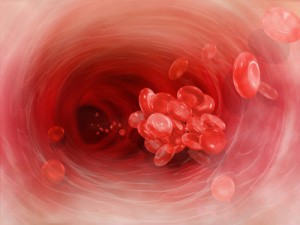Hemorrhagic Complications of Anticoagulant Treatment
In summary, the ideal design to address the question of whether NSAIDs increase bleeding on vitamin K antagonists is a randomized trial. No such study has been done. To date, a number of observational studies have examined the question. Such studies, however, are subject to a number of important biases. Hence, it is concluded that the quality of evidence supporting any relationship between NSAID use and bleeding on vitamin K antagonists is weak. 
Risk of bleeding and the length of time relative to when anticoagulant therapy started
Four studies reported higher frequencies of bleeding early in the course of therapy. In one of these studies, for example, the frequency of major bleeding decreased from 3.0%/mo the first month of outpatient warfarin therapy to 0.8%/mo during the rest of the first year of therapy, and to 0.3%/mo thereafter. Other descriptive studies have supported this observation, although some studies have not Cialis Pharmacy.
Estimating bleeding risk
Models have been developed for estimating the risk for major bleeding during vitamin K antagonist anticoagulant therapy. These models are based on the identification of independent risk factors for warfarin-related bleeding, such as a history of stroke, history of GI bleeding, age> 65 years, and higher levels of anticoagula-tion. Such prediction rules can be useful in clinical practice because although physicians’ estimates of risk for anticoagulant-related bleeding are reasonably accurate during hospitalization, they are inaccurate during long-term outpatient therapy.
Two prediction models have been developed and validated in outpatients treated with warfarin. Beyth et al identified four independent risk factors for bleeding: age> 65 years, history of GI bleeding, history of stroke, and one or more of four specific comorbid conditions. This model was validated in another cohort of patients treated in another city; the cumulative incidence of major bleeding at 48 months was 53% in high-risk patients (three or four risk factors), 12% in middle-risk patients (one or two risk factors), and 3% in low-risk patients (no risk factors).
Kuijer et al developed another prediction model based on age, gender, and the presence of malignancy. In patients classified at high, middle, and low risk, the frequency of major bleeding was 7%, 4%, and 1%, respectively, after 3 months of therapy. These prediction models should not be the sole criterion for deciding whether to initiate therapy, but should be used in conjunction with other assessments, such as the patient’s functional and cognitive status, likelihood of compliance to therapy, risk of thrombosis, and personal preference. Clinicians can use these prediction models to help weigh the risks and benefits of coumarin therapy, potentially adjusting the intensity, type, or length of therapy or the frequency of INR monitoring in Canadian viagra here.